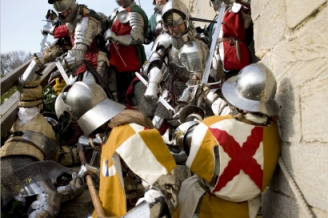Red Teaming is a term originally used by the military to aid decision making to analyse what the enemy would do in a given situation. Red Teaming subjects your ideas, plans and strategies to rigorous scrutiny and analysis. This enables you to adapt own forces behaviour and capability to pre-emptively counter potential responses, and be one step ahead.
By using red teaming activities you can challenge the very core of an enterprise’s plans, proposals, assumptions, tactics and capability. This will enable rapid problem solving, risk reduction and identification of opportunities and areas to improve.
What Exactly is Red Teaming?
Red Teaming activities involve challenging an enterprise’s plans, ideas and assumptions through close scrutiny and rigorous analysis. The aim is to provide key decision makers with a more robust understanding of the potential outcomes and consequences of implementing a specific plan.
Red Teaming can be used to challenge marketing strategies or examine gaps and weaknesses in a technical capability or product.
The outcome of your red teaming activities should provide your team with an understanding of the competitive environment through your adversaries’ perspective, giving rise to being able to identify your own weaknesses.
What can I use Red Teaming Activities for?
Red teaming exercises can be used to improve your chances of success in any given situation. By identifying what could go wrong, how changing circumstances could affect the outcome, or how your competitors may behave, you can make more robust decisions and reduce.
Taking red teaming to the next level of analysis, you could even move into mathematical game theory. Lots of fun to do and provides some quite incredible insights.
You can use red teaming for planning activities such as:
– Event planning
– Technology assessment
– Marketing strategies
– Public relations
– Supply chain management
– Red teaming is particularly useful for contingency planning in situations where the environment is liable to change unexpectedly, or conditions are uncertain. Just like any business environment.
How do I Undertake Red Teaming Activities?
There are a few different analytical approaches that can be employed for red teaming. Depending upon the questions you are trying to answer, you will select those that will yield the best results. The choice of techniques improves with skill and experience.
For the red teaming activities that I lead, the first step is to identify the task you are trying to accomplish.
Identify the Task or Question to Solve
You are performing red teaming for a reason. This is usually to identify the weaknesses in your plans and strategies. You may have a brilliant new design for some technology and want to check that it will work in all circumstances. How will the user use and abuse the gadget you are making?
Perhaps you are choosing how to launch a new marketing campaign. Pehaps you are about to embark on some major business process re-engineering. Red teaming can help in all of these situations to reduce risks, exposure to failure, and to increase your chances of success.
Identify the Red Team Leader
The choice of a suitable team leader for red teaming is crucial. The team leader has to demonstrate leadership, diplomacy, provide the right environment for creative minds, and drive the team to deliver a more robust solution.
Identify the Red Team
The red team should include characters who are creative and imaginative thinkers, subject matter experts, have analytical minds, and be cultural advisors. The team members should possess both curiosity, enquiring minds, and have a strong desire to drill down into the depths of a problem to seek solutions.
One way or Two Way Red Teaming
Before you start, you will need to decide whether to run a one way or two way red teaming exercise. One way red teaming exercises involve just one team analyising the question at hand.
Two way red teaming exercises involve running two team simultaneously, where decisions and actions from one team are fed into the other team. You run through your scenario, with staged decision points. A runner goes between the two separate rooms that the red teams are in and feeds them with responses.
Two way red teaming is used where you want a more dynamic ativity, and it gives a much wider range of results. If you really want to explore areas you never even considered, two way red teaming is perfect.
Running your Red Teaming Exercise
You need to brief all members of the red team as to what you are analysing, and any concerns that you may have with success. This should include what your plans are aiming to achieve, and the environment in which they will be used.
One of the best approaches that I have found is to begin with a free form brainstorming activity. With whiteboards and flipcharts, the red team leader begins to pose some questions to challenge the reliability and feasibility of success. The red team members will usually eagerly speak their minds.
It will be the skill of the red team leader that dictates how the session develops.
Once the ideas begin to flow, these should be documented. The red team leader may decide to call a halt to proceedings when a sufficient number of areas for deeper analysis emerge. The team can sometimes then be split into specific disciplines to examine the areas highlighted. For example, if there are concerns relating to how the customer base will react to a marketing campaign, further insights into the behaviour of that particular customer demographic may need to be explored. If a vulnerability in a technology implementation is identified, the red teaming exercise may then focus on understanding the weaknesses and how to address them to provide a robust design.
Red teaming is a wonderfully productive process, and in my experience always leads to a more robust outcome. If you want to find out more about red teaming, the US Army has kindly published its Red Teaming Handbook online.
